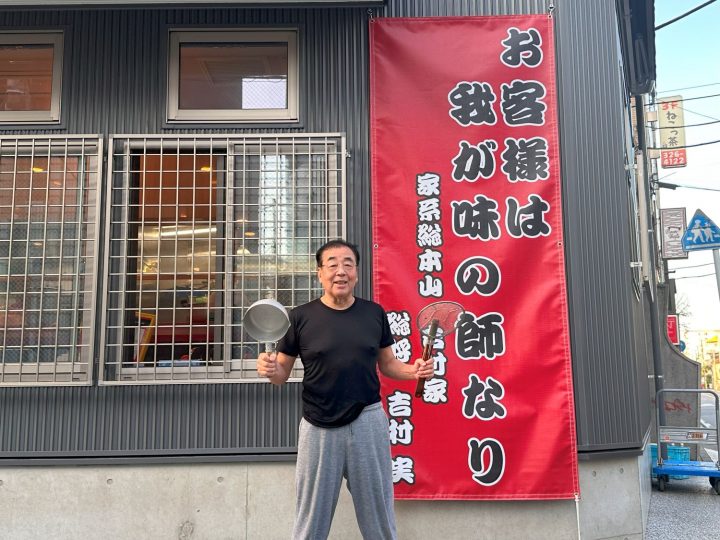Walk, see, hear, and taste. Experience the history and charm of Odawara with all your senses!

A world of art to visit, see and feel
File.27 Odawara City Street Museum
Miyuki Inoue (Magcal Editorial Department)
Odawara developed as a castle town, and since the Edo period has been a key transportation hub where various people, goods, and cultures have come and gone. It is a town full of amazing things, such as buildings that look like cultural assets suddenly appearing while casually walking around, and even those that are "open for business" as usual.
The Machikado Museum is a place where you can see and experience historical assets that cannot all be displayed in glass cases. With a guidebook published by Odawara City in hand, I took a leisurely stroll around the museum.
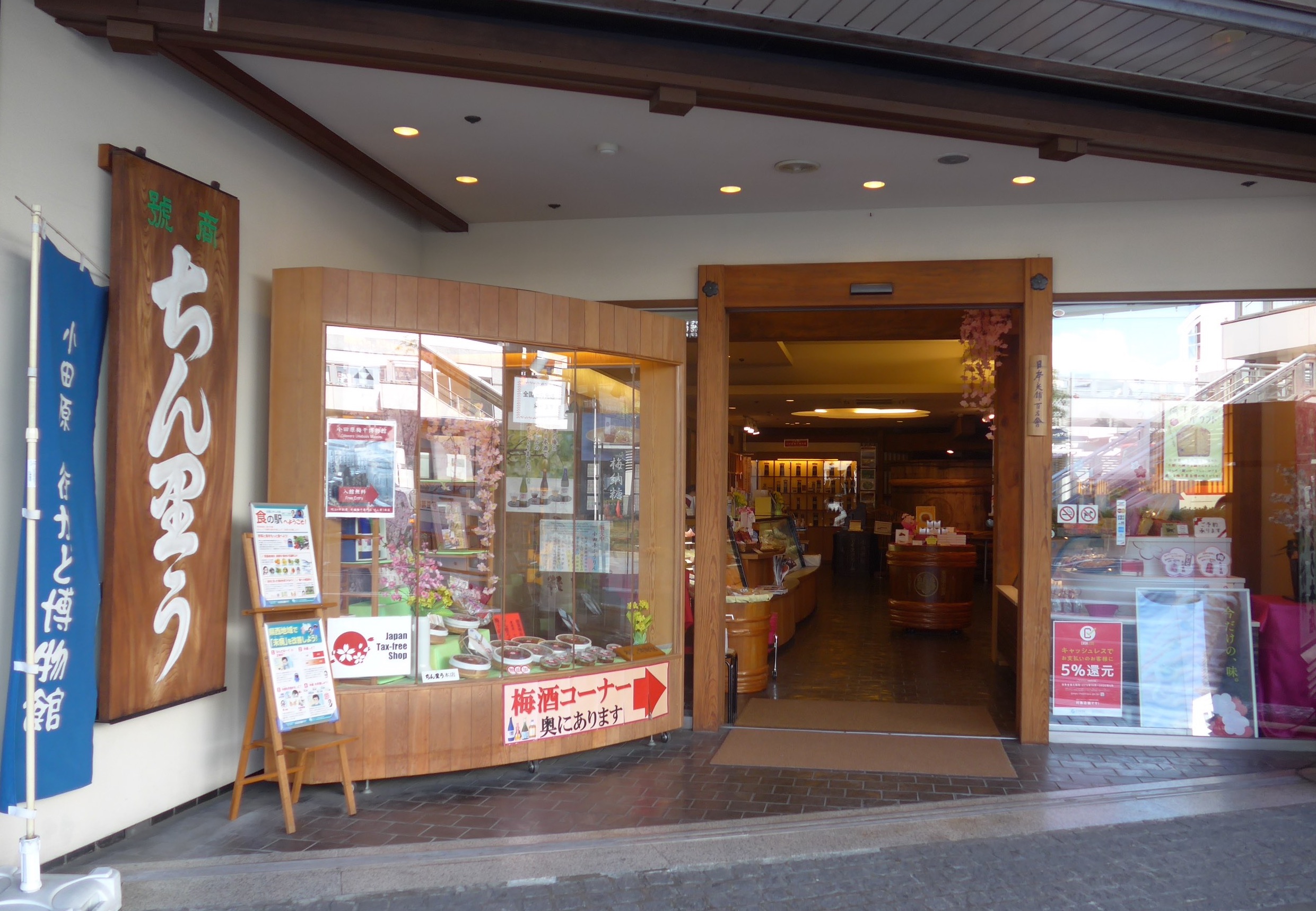
First, head to Chinriu's main store, the Odawara Ekimae Umeboshi Museum, which is a 3-minute walk from the east exit of Odawara Station.
This umeboshi specialty store originated as the restaurant "Chinryutei" which opened in Odawara city in 1871. Later, when Odawara Station opened, the store was moved to in front of the station and renamed "Chinriu Main Store."
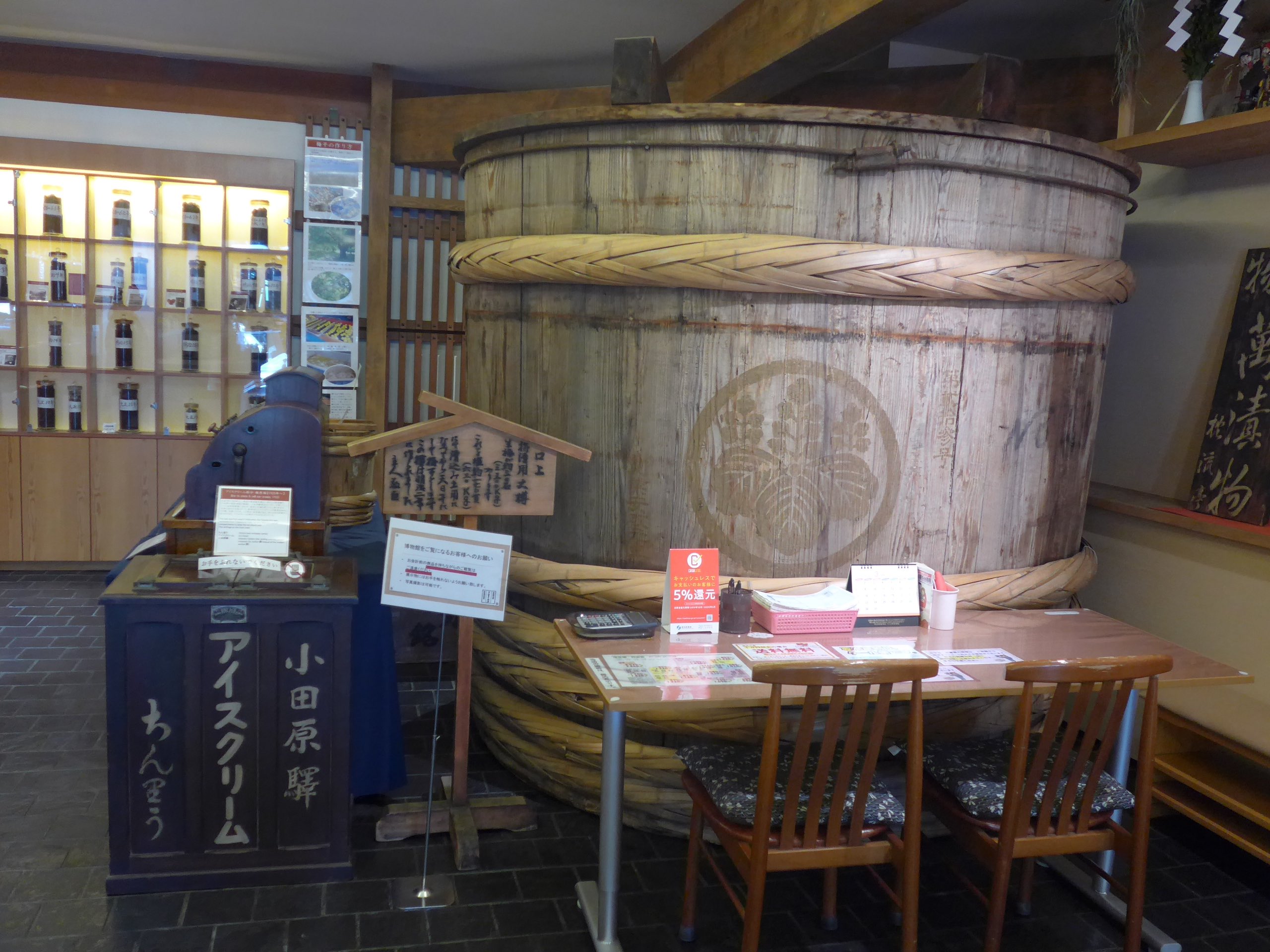
At the back of the store, you'll find a pickle barrel from the early Meiji period and a cash register from the 1900s, which alone give you a sense of the store's rich history.
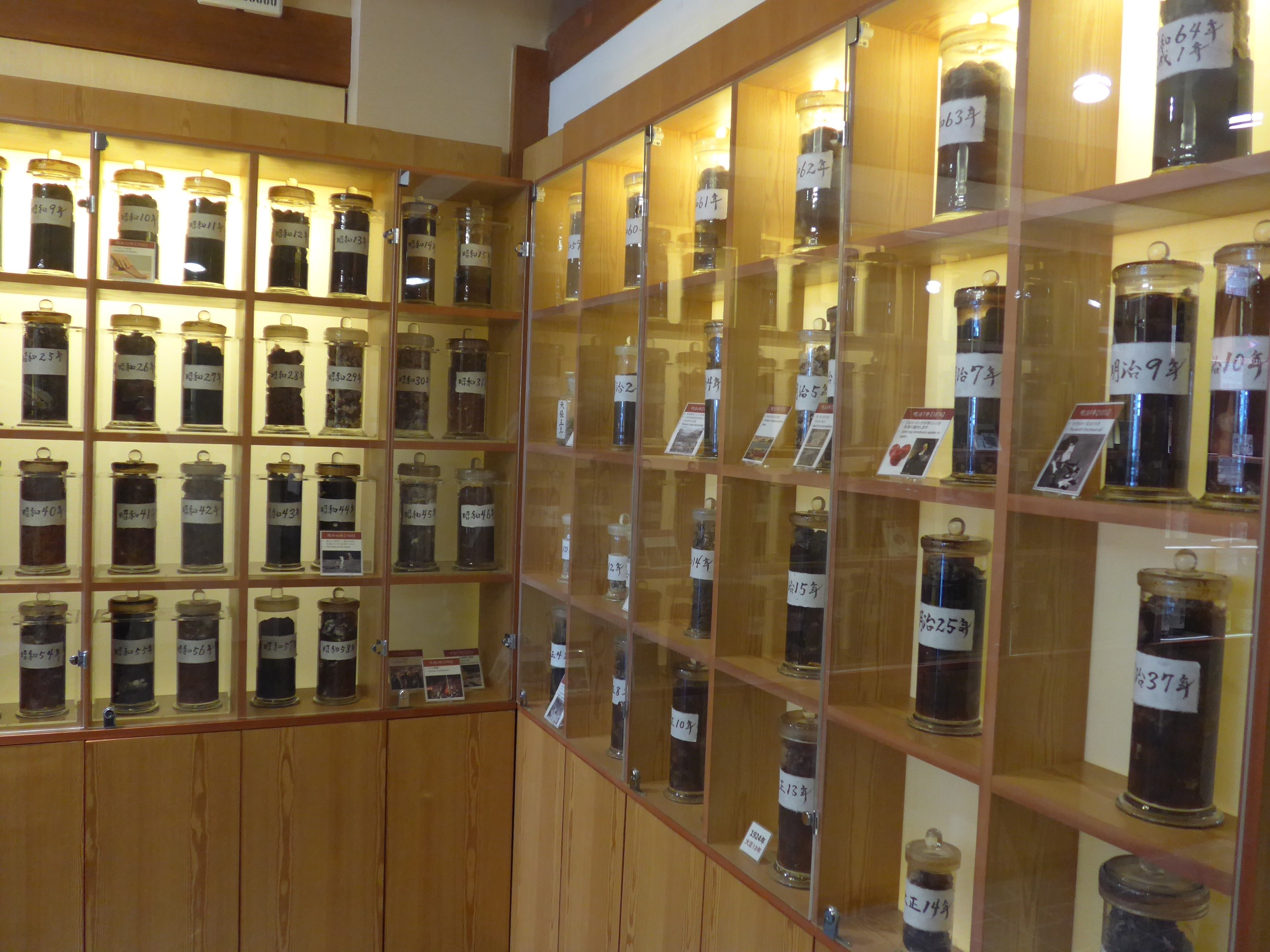
The highlight is the vast collection of umeboshi plums lined up. The oldest one is surprisingly from 1834 (Tenpo 5). I would love to find a "birthyear umeboshi" from the year I was born.
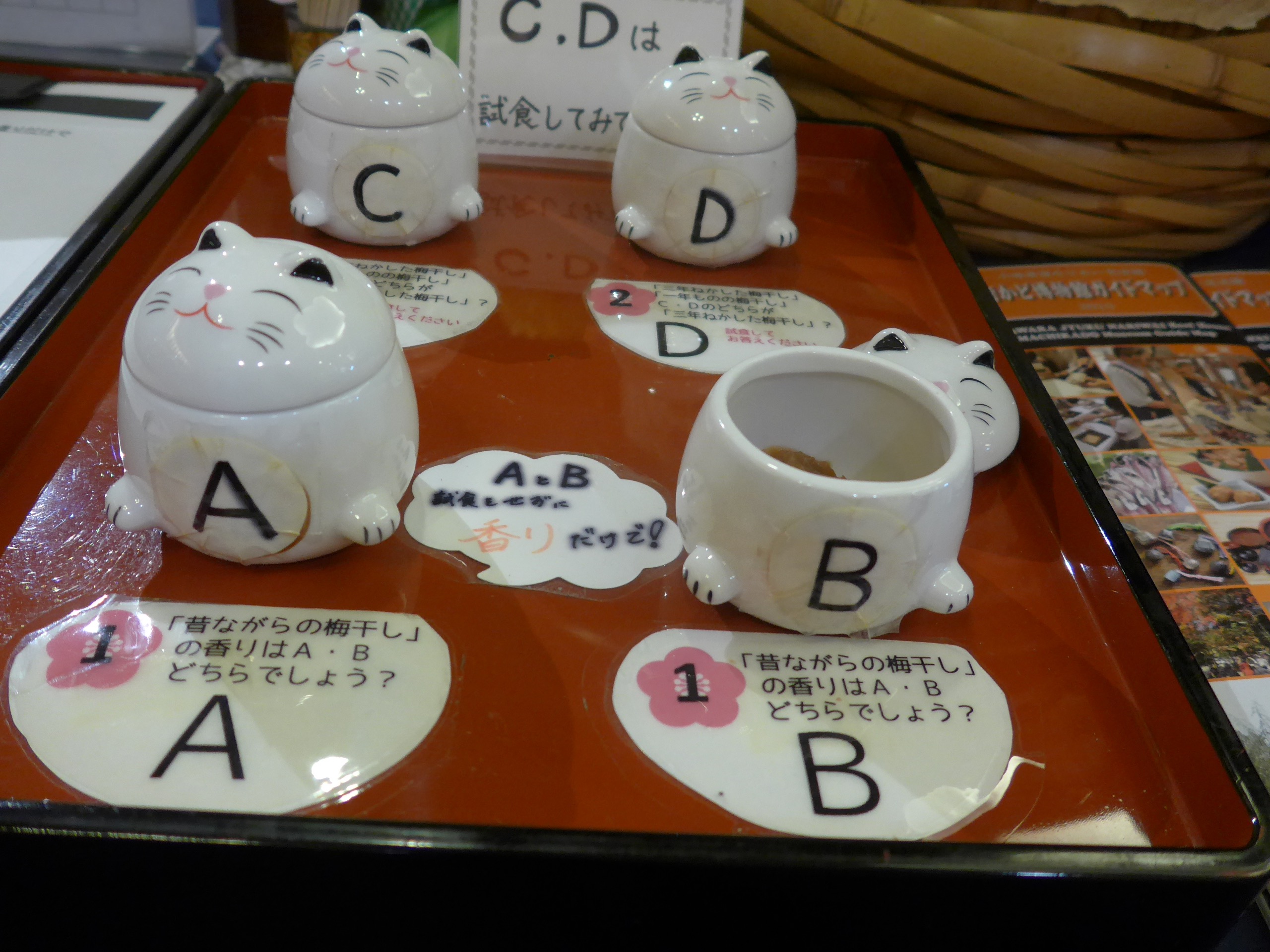
There was a small event called "Umeboshi Quiz," so I decided to give it a try.
You have to guess how the umeboshi are made and how their taste changes over time by smelling and tasting them, but this is surprisingly difficult. One quiz participant will win a prize each month, so be sure to give it a try.
Chinriu Main Store《Odawara Station Umeboshi Museum》
[Address] 1-2-1 Sakaemachi, Odawara City
[TEL] 0120-30-4951
[Opening hours] 9:00-18:00
[Closed] January 1st
* Click here for the official website!
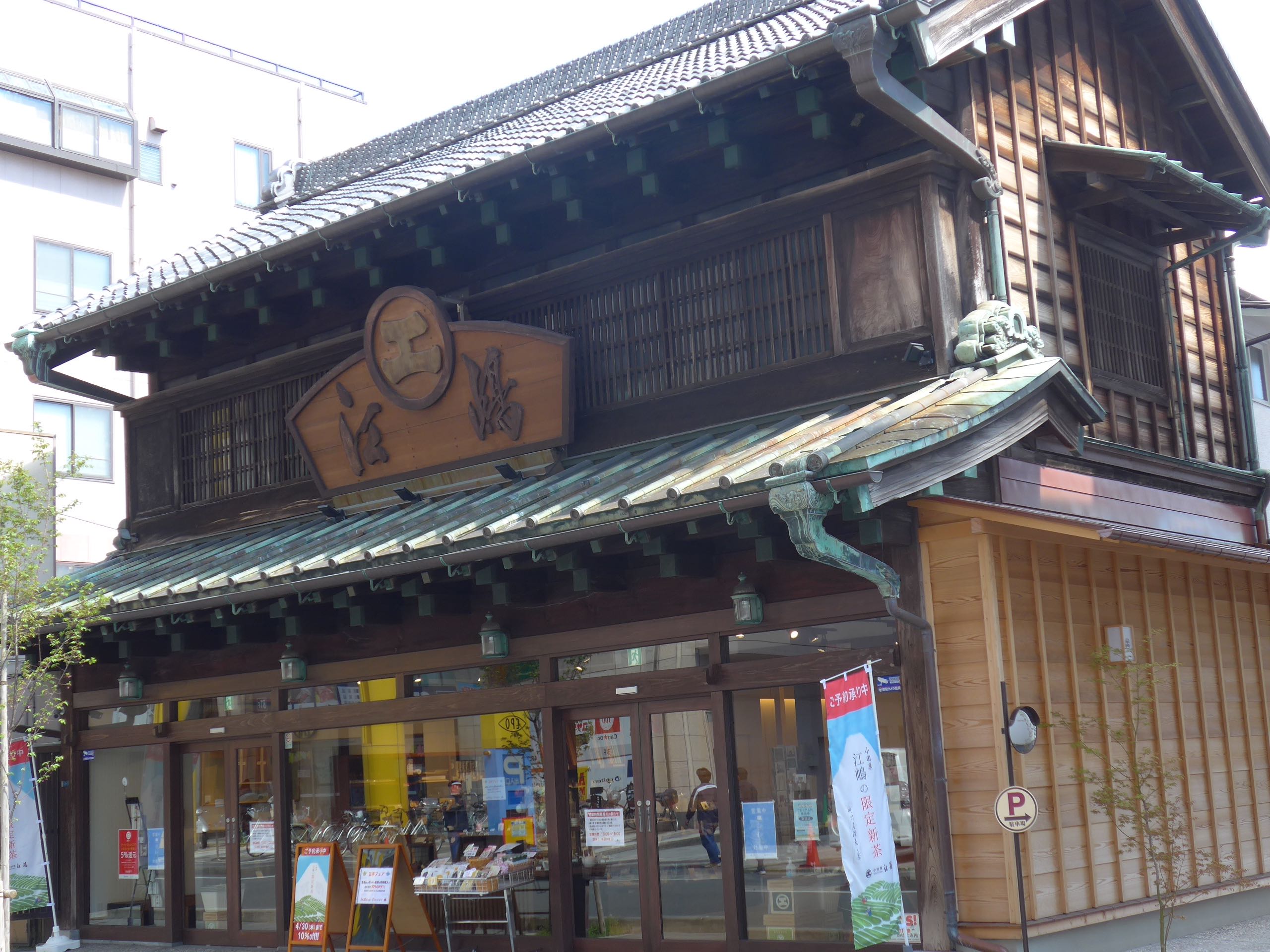
Next up is Ejima's "Wagami Chaho."
The founder began his business in Odawara in 1661. He initially ran a salt business on the coast. In response to the demands of the times, he began selling Japanese paper, and when he traveled to Suruga and Totomi as a paper peddler, he brought back tea, a local specialty, and tea became his main product.
The current building was rebuilt by the 15th generation owner, Ejima Heihachi, after the store was destroyed in the Great Kanto Earthquake. The overhanging eaves, known as "dashigeta-zukuri," are a tradition of Odawara merchants.
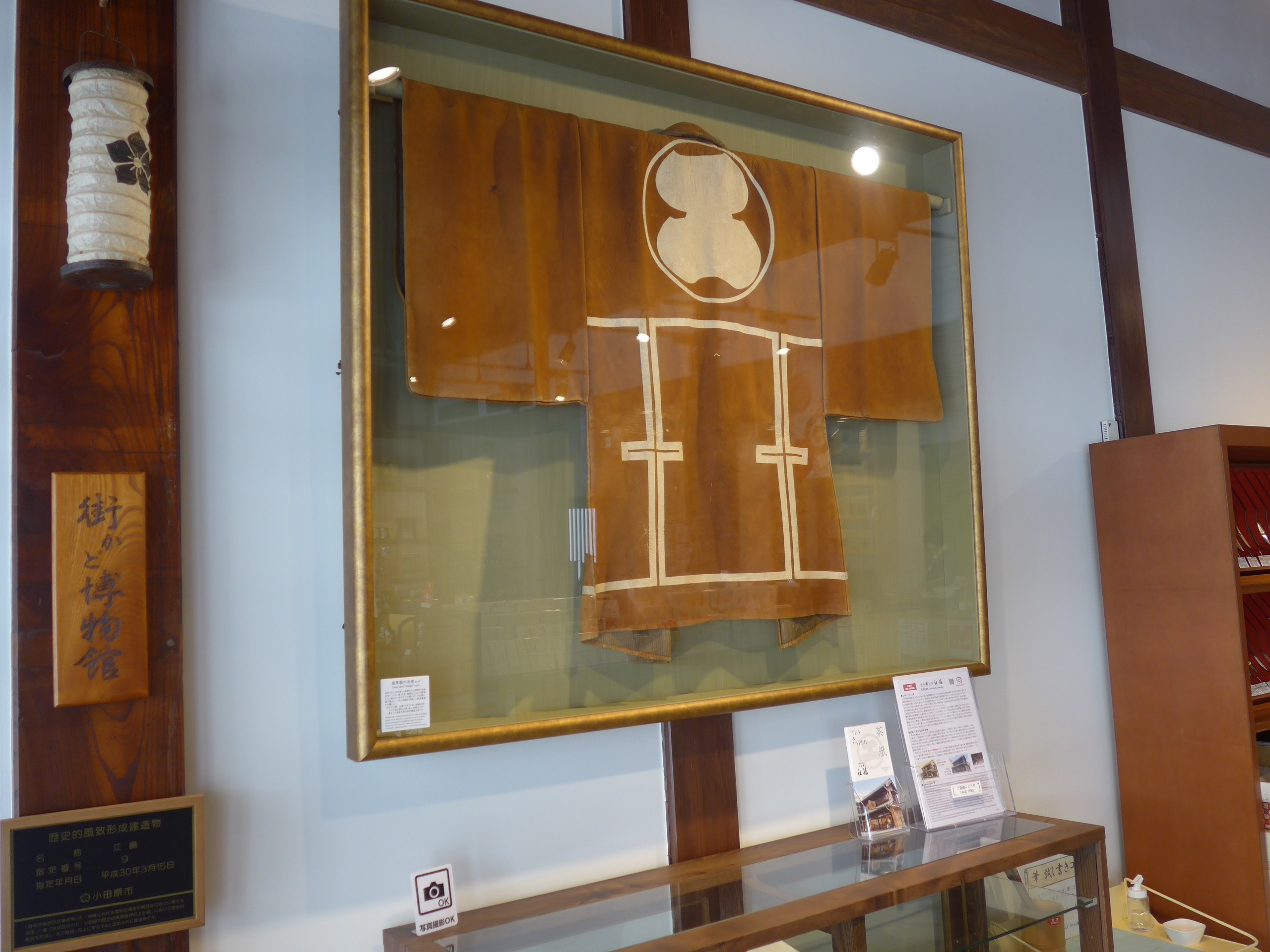
The interior of the store has been remodeled to make it earthquake-resistant, but the museum area is well worth seeing. Exhibits include a deerskin happi coat made to commemorate the building's completion and recovery from the earthquake, as well as a tea kettle favored by the famous tea master Masuda Donno.
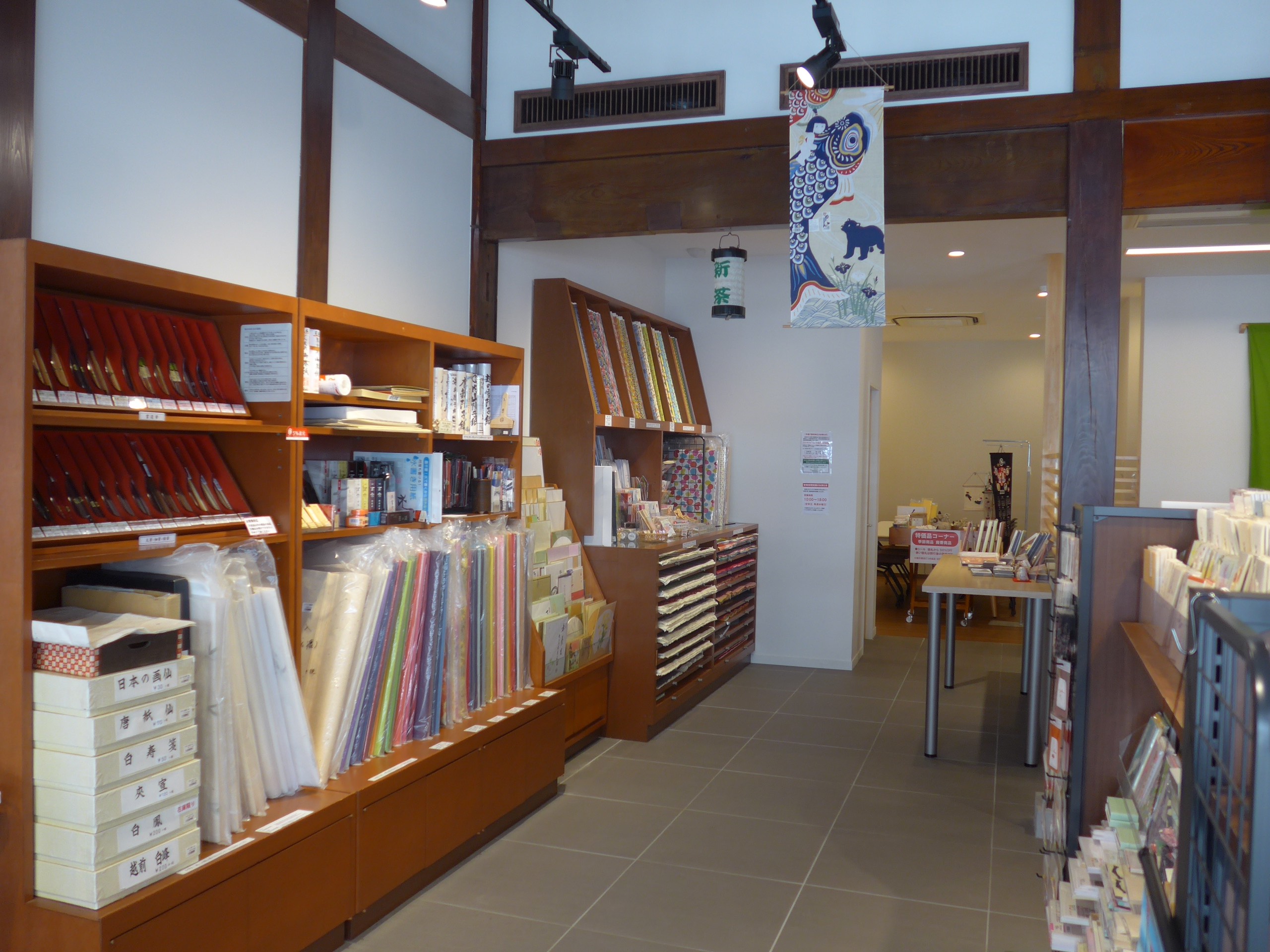
The main product is tea, but the Japanese crafts corner also has a selection of washi paper from all over the country, which is fun to just look at.
Ejima's "Japanese Paper Tea Shop"
[Address] 2-13-7 Sakaemachi, Odawara City
[TEL] 0465-22-1611
[Opening hours] 9:30-18:30
[Closed] Wednesday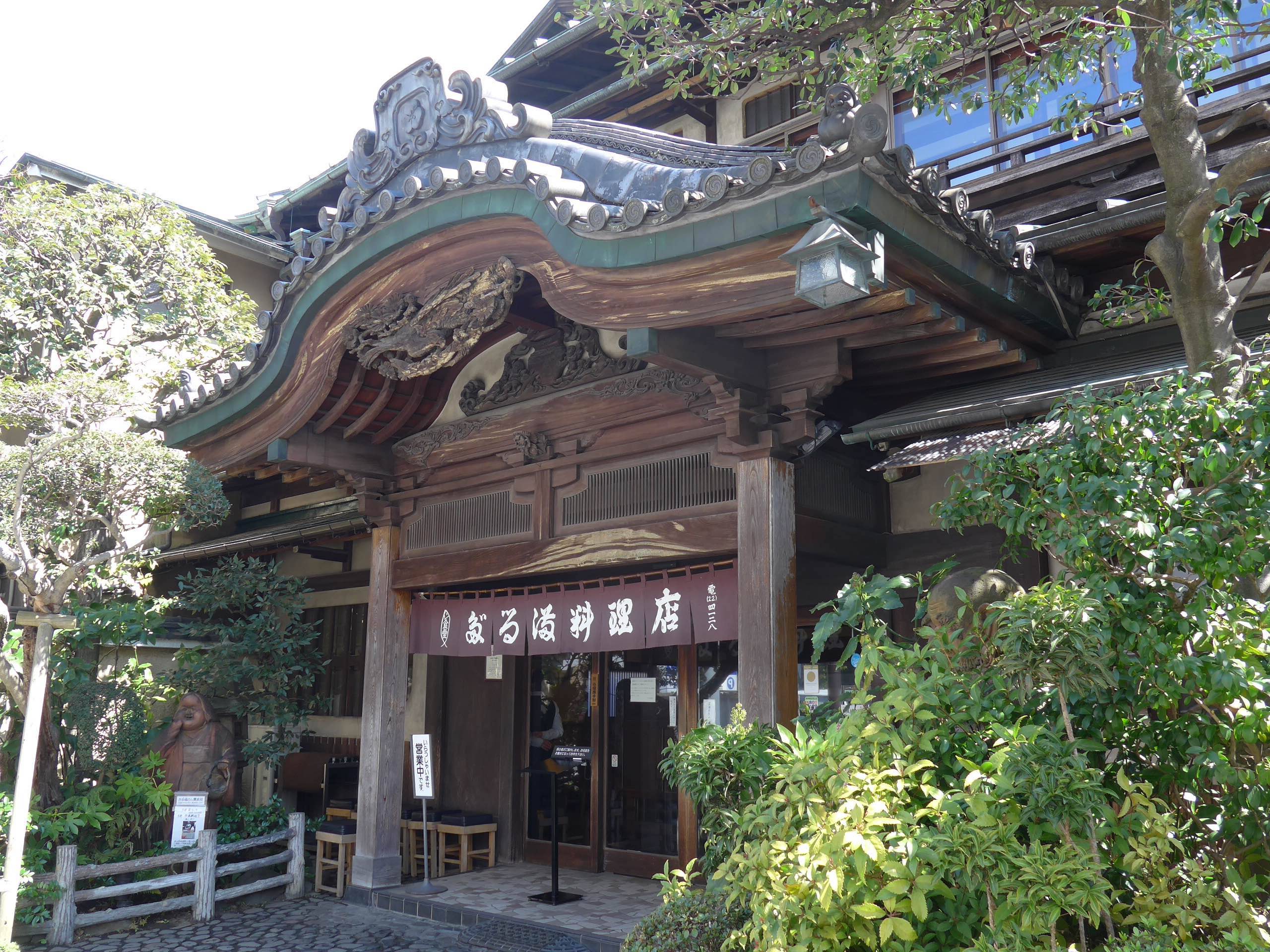
At lunchtime, we went to the Daruma restaurant "Noren and Aji no Museum."
The restaurant was founded in 1893. The original store was destroyed in the Great Kanto Earthquake, but was later rebuilt using the ample funds gained from a large catch of yellowtail. The building, with its karahafu irimoya roof, is designated as a national tangible cultural property.
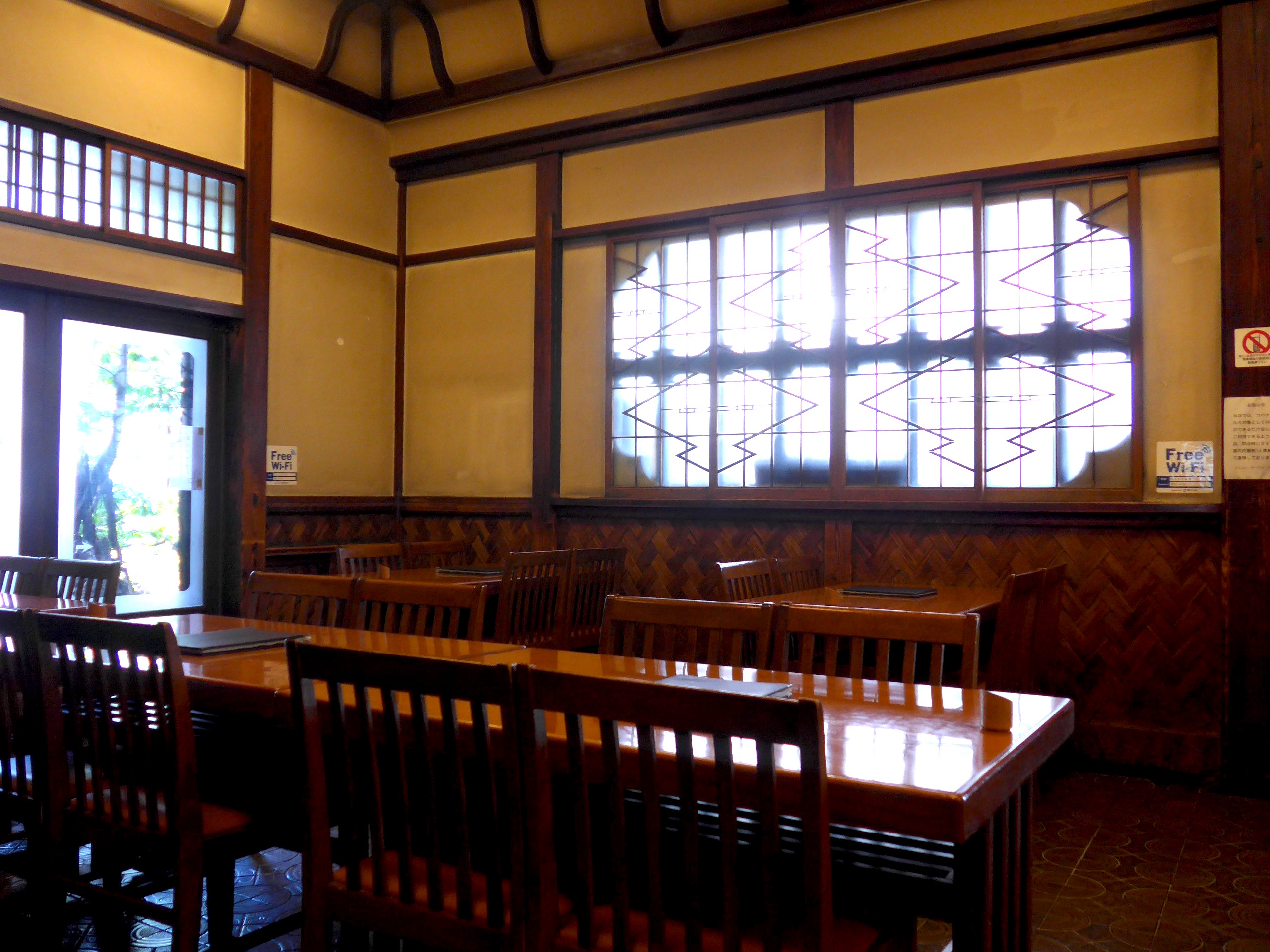
The restaurant on the first floor is open to the public without a reservation, so why not take a moment to admire the building while enjoying a meal? The building was handcrafted by first-class craftsmen using generous amounts of high-quality Japanese cypress, pine, and zelkova wood sourced from a local lumberyard, and everything from the walls to the ceiling is like a work of art.
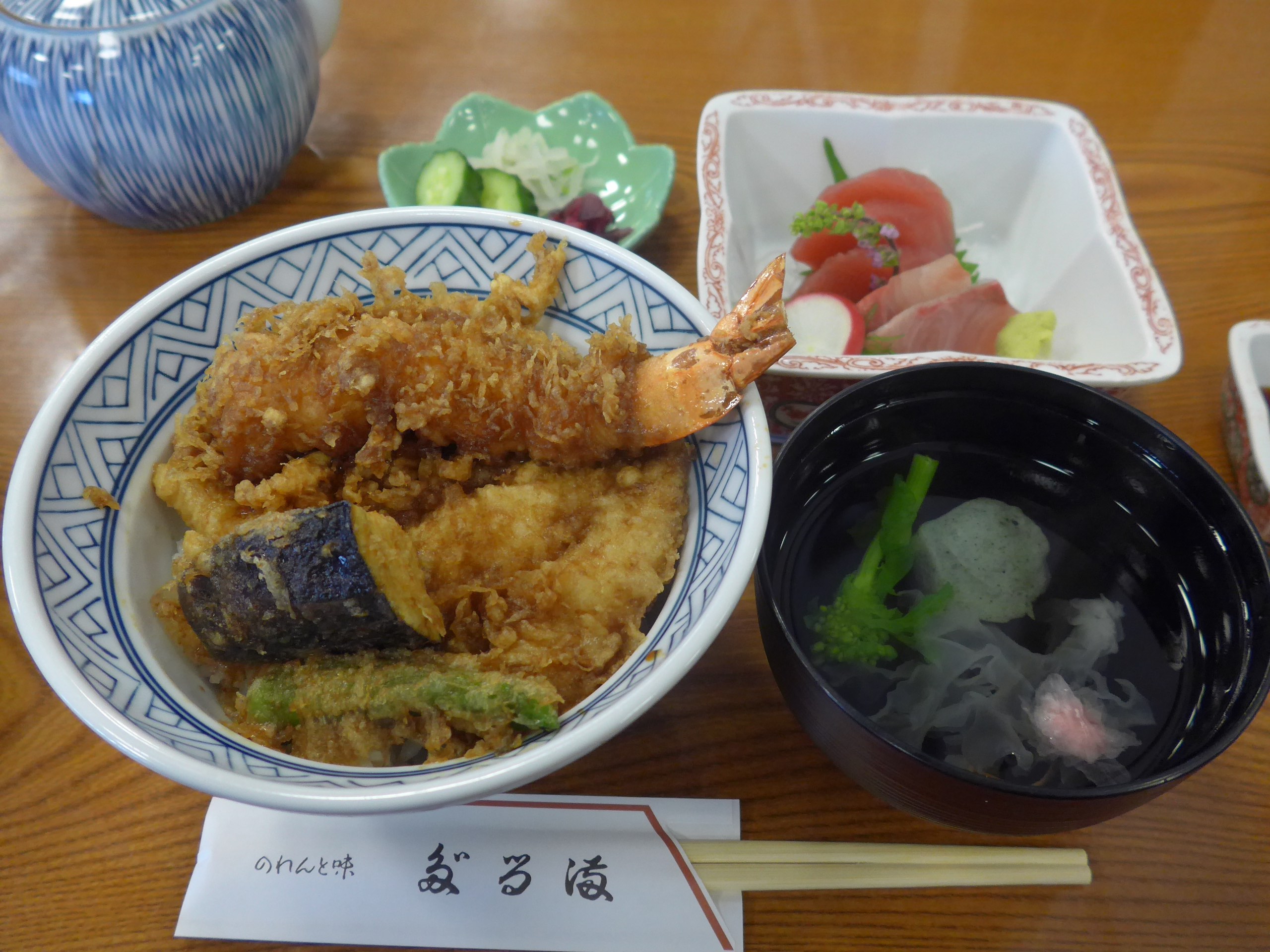
Many people would say that Daruma Restaurant is famous for its horse mackerel sushi, but we also recommend the tempura bowl, which has been served since the restaurant opened. The tempura sauce, which is kept secret, has been topped up to preserve the flavor, making it a special dish worthy of a long-established restaurant.
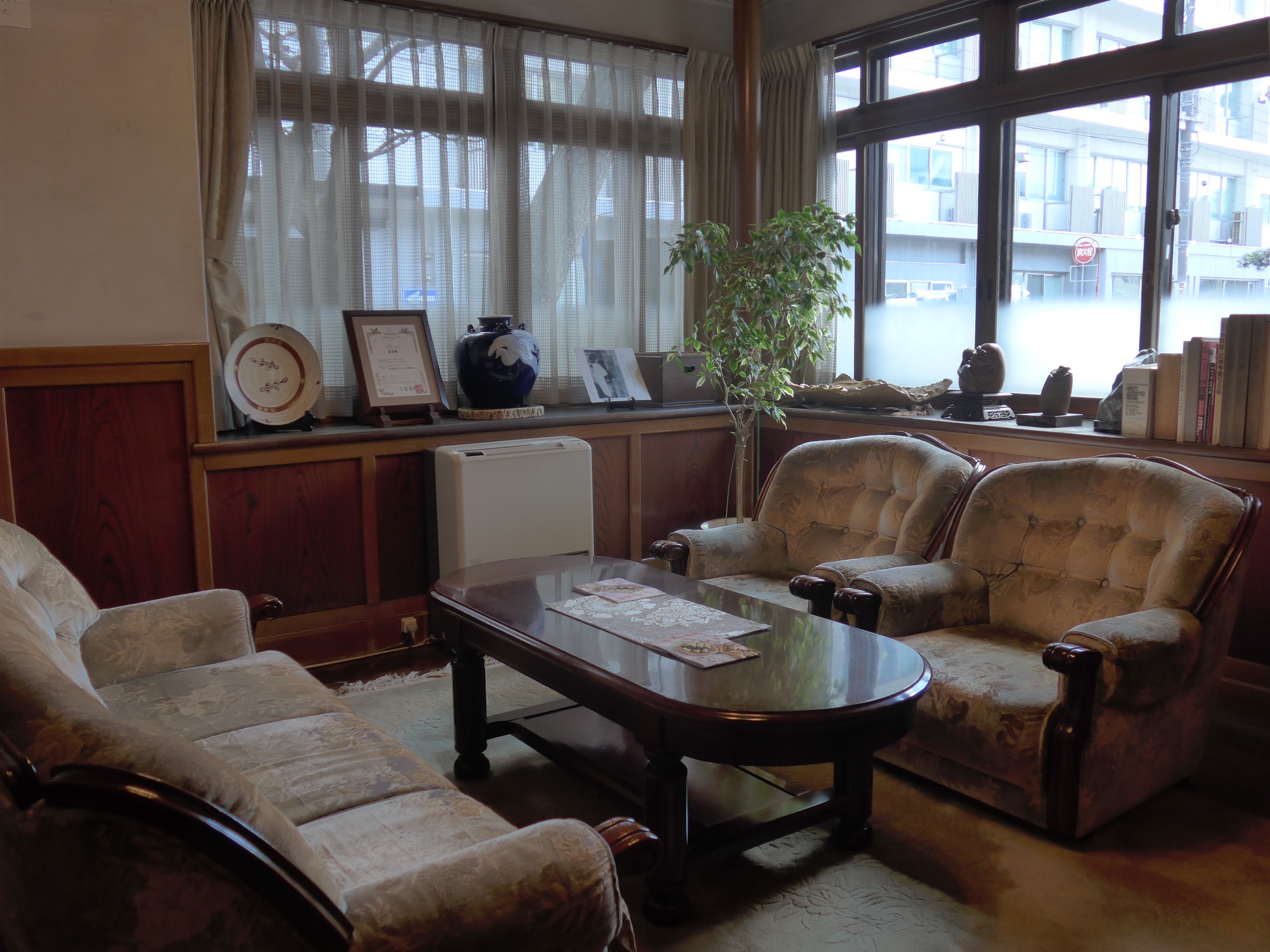
One of the rooms is open to the public as a "Street Corner Museum," so ask the staff for a tour. It has a sophisticated atmosphere that is a little different from the feel of a restaurant, and is apparently still used as a reception room for meetings and other purposes.
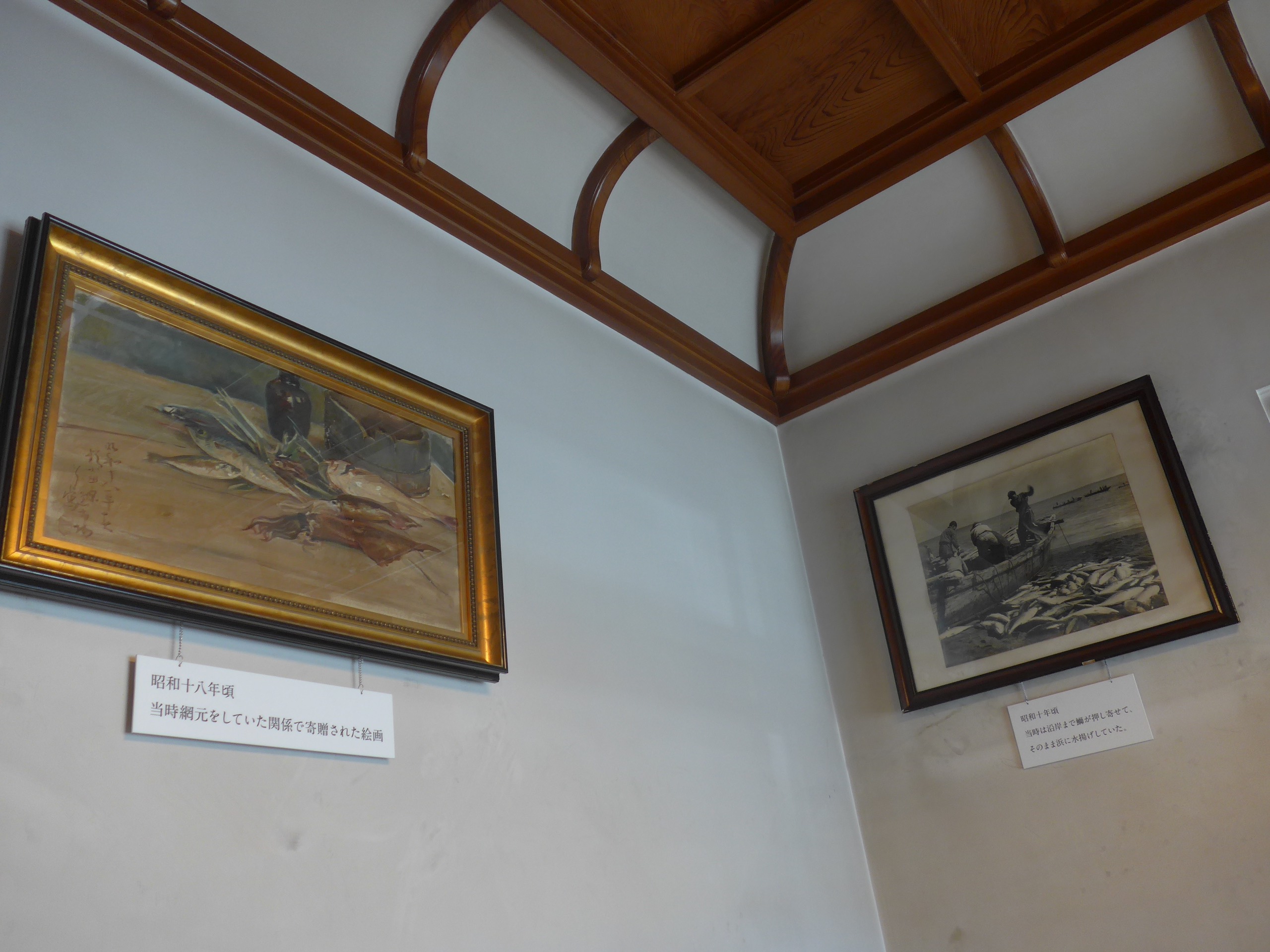
The museum also displays photographs of the legendary yellowtail landing scene, as well as the brazier used by author Chotaro Kawasaki.
Daruma Restaurant (Noren and Taste Museum)
[Address] 2-1-30 Honmachi, Odawara City
[TEL] 0465-22-4128
[Opening hours] 11:00-20:00
[Closed] January 1st to 3rd
* Click here for the official website!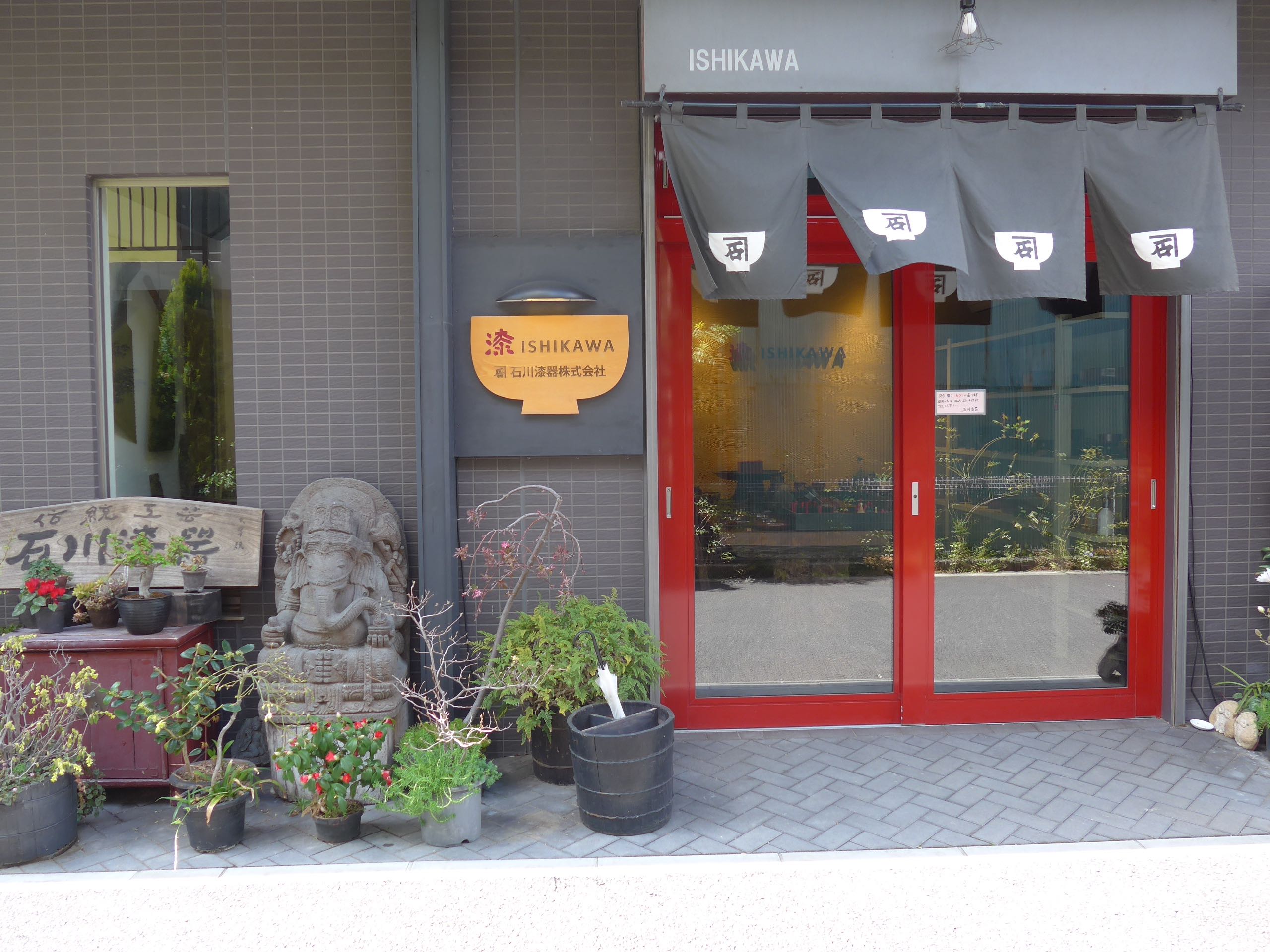
At Ishikawa Lacquerware's Lacquer and Utensil Gallery, you can experience Odawara lacquerware, which originated in the Muromachi period.
The Ishikawa family, who have served as spear lacquers for the Odawara domain since the Edo period, founded their workshop in 1887. They are committed to using domestic materials and handle everything from woodworking to lacquering.
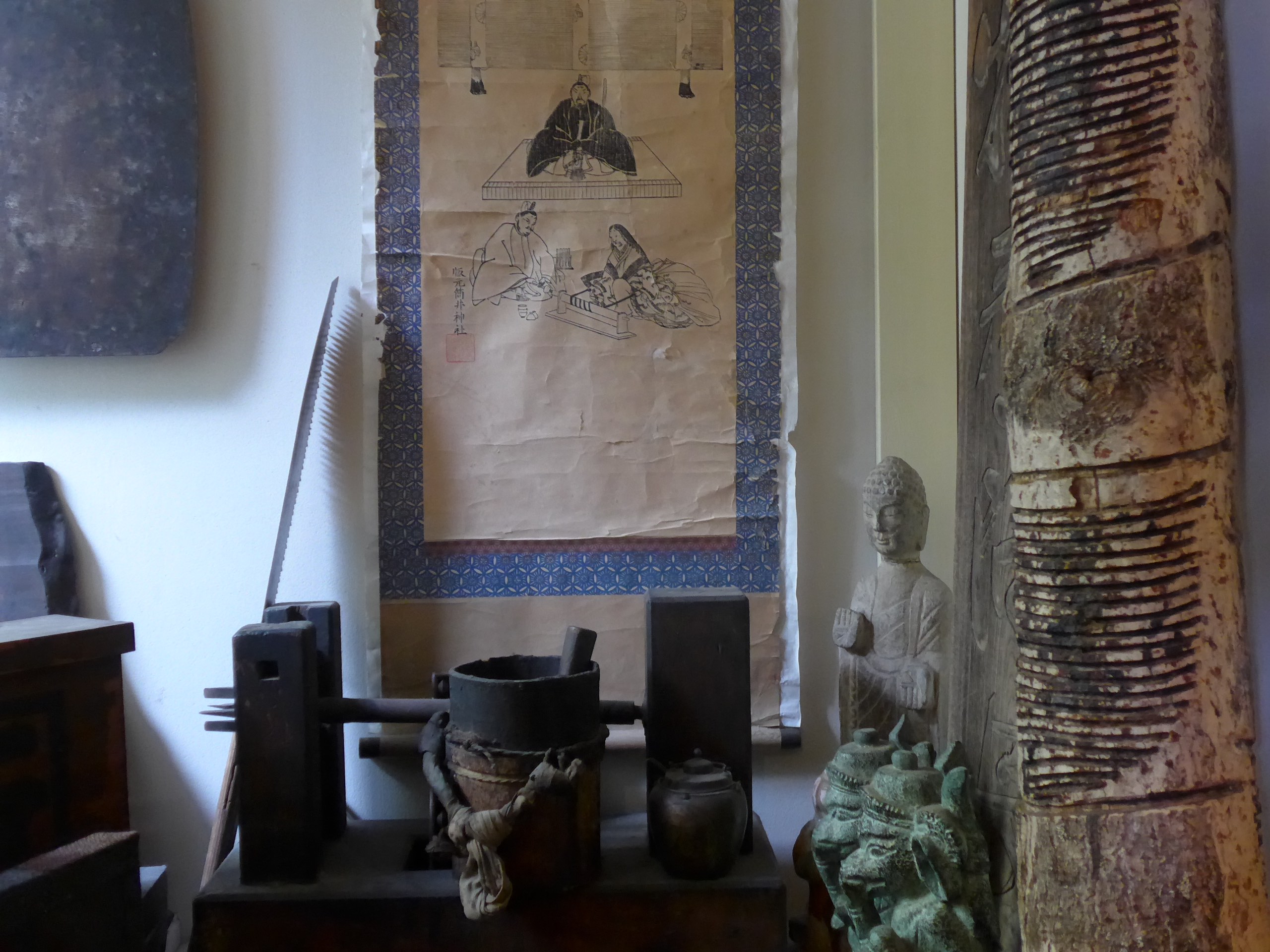
Inside the store, spears and tools left over from the time when the owner was a spear painter for the Okubo domain are also on display.
The exterior of the store has been remodeled, but the interior seems to still have a long history.

Lacquerware is a natural product, so it can become damaged with use. However, Odawara lacquerware can be repainted as many times as you like, so feel free to ask in store about maintaining your precious ware.
Ishikawa Lacquerware "Lacquerware and Vessel Gallery"
[Address] 1-19-16-102 Sakaemachi, Odawara City
[TEL] 0465-22-5414
[Opening hours] 10:00-18:00
[Closed] Wednesday
* Click here for the official website!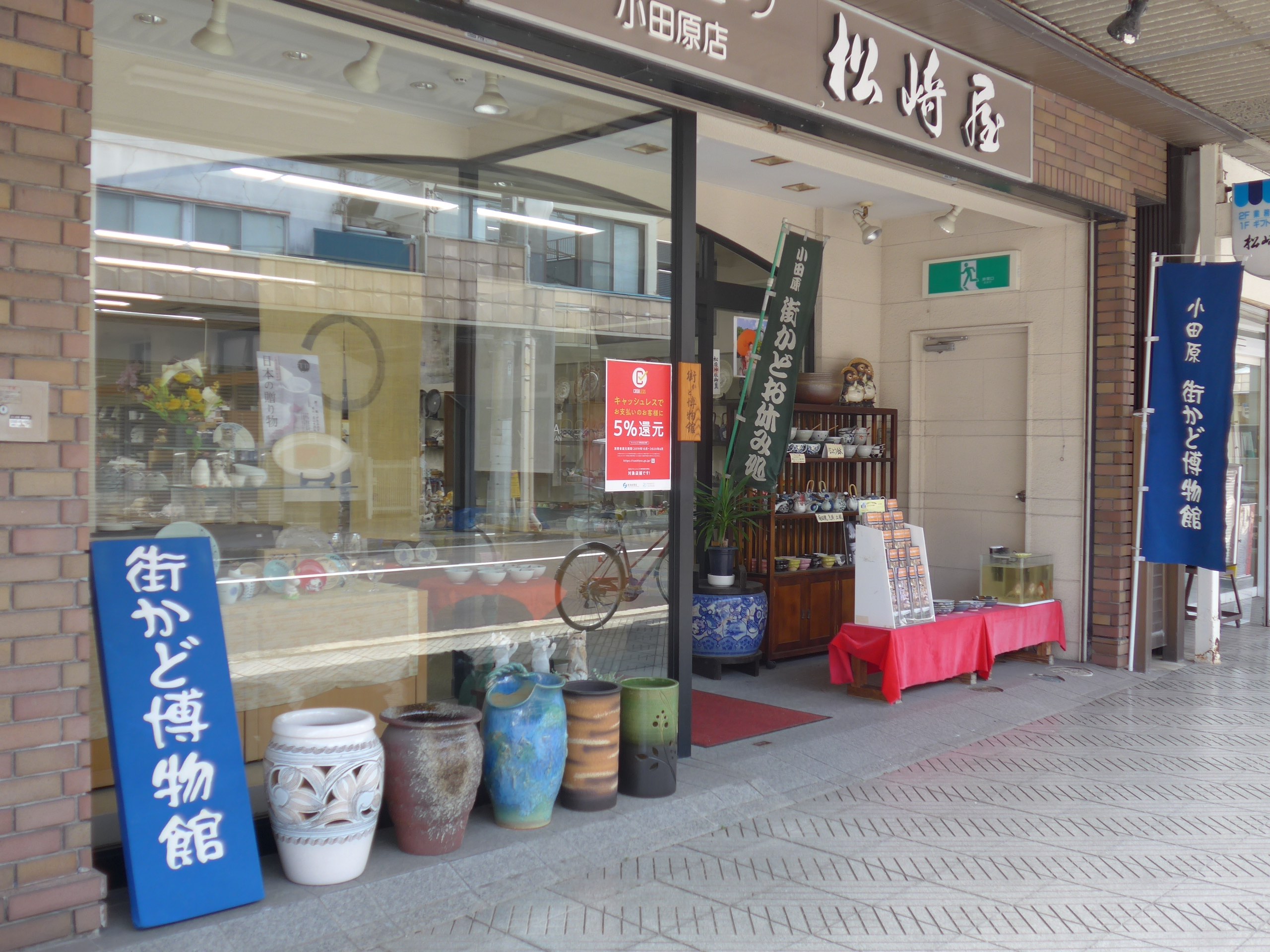
Speaking of tableware, I'd also like to take a look at Matsuzakiya Pottery Store 's Tosai Gallery.
From the outside, it looks like an ordinary pottery store, but as it is a long-established store that was founded in 1887, the ``stock of products'' that has been collected by successive owners is quite impressive.
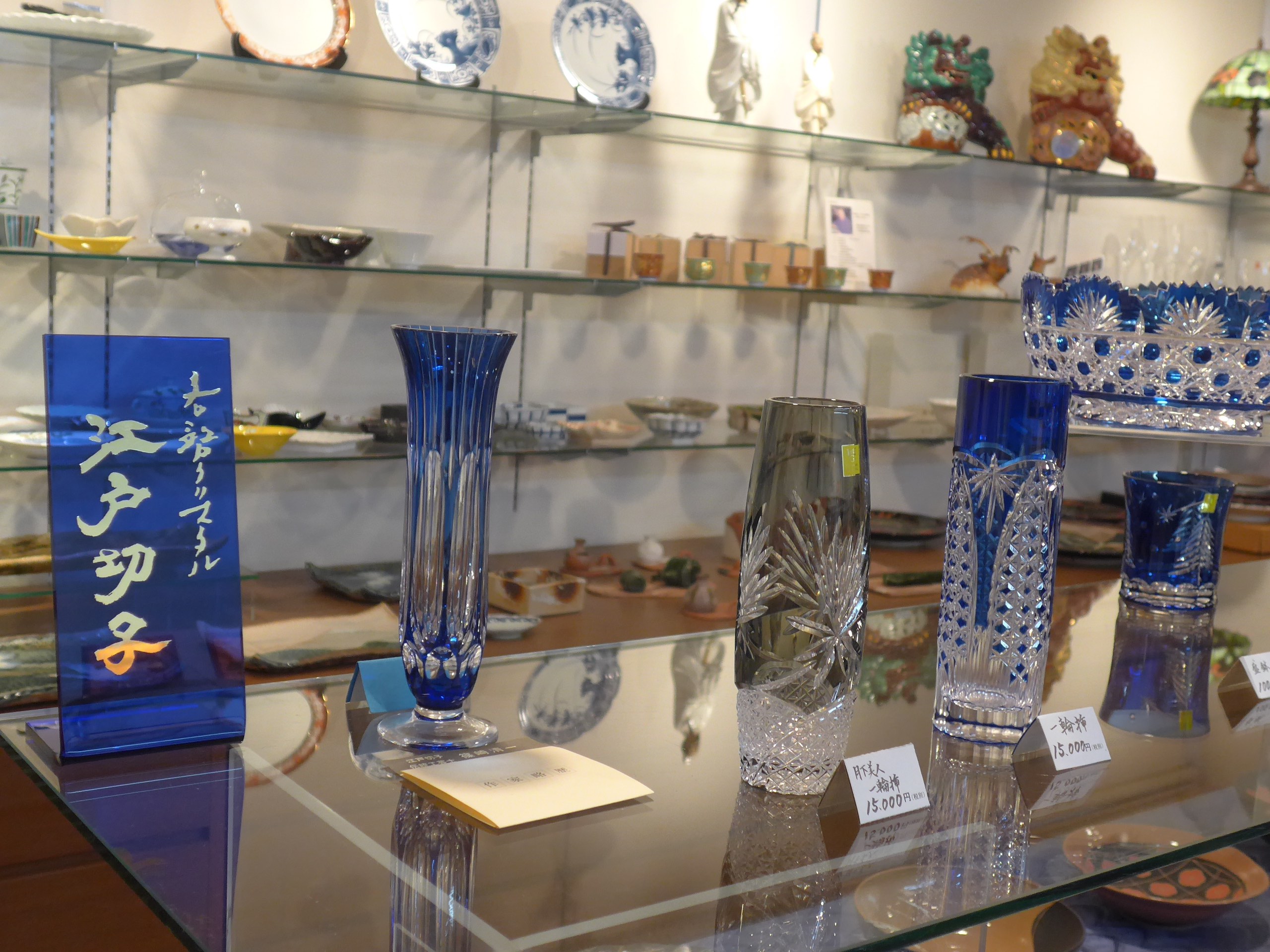
When you go up to the second floor, you will see an array of ceramics and glassware from all over Japan. Lined up among the samples for business negotiations are "products" that the previous and previous previous generations had purchased and kept without selling. Many of these are famous items that are now difficult to obtain, so it is a feast for the eyes.
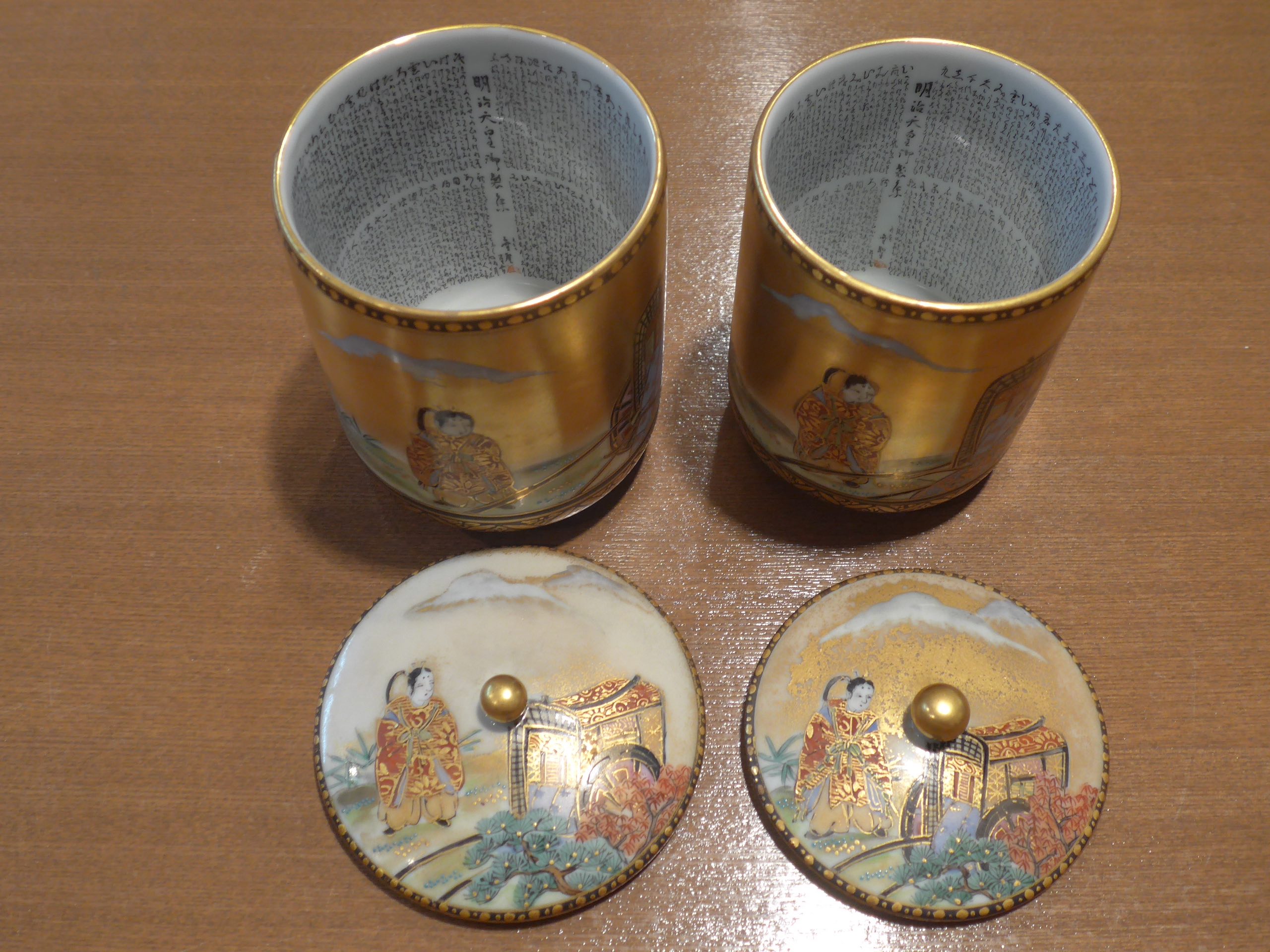
This is a lidded teacup made using the "Kutani brush fine calligraphy technique." The inside is densely inscribed with characters, using an advanced technique that is said to be difficult to reproduce today.
By the way, since they are just "products," most of them can be purchased if you wish. However, the price... there are so many zeros lined up that it's hard to tell how much they cost at a glance...
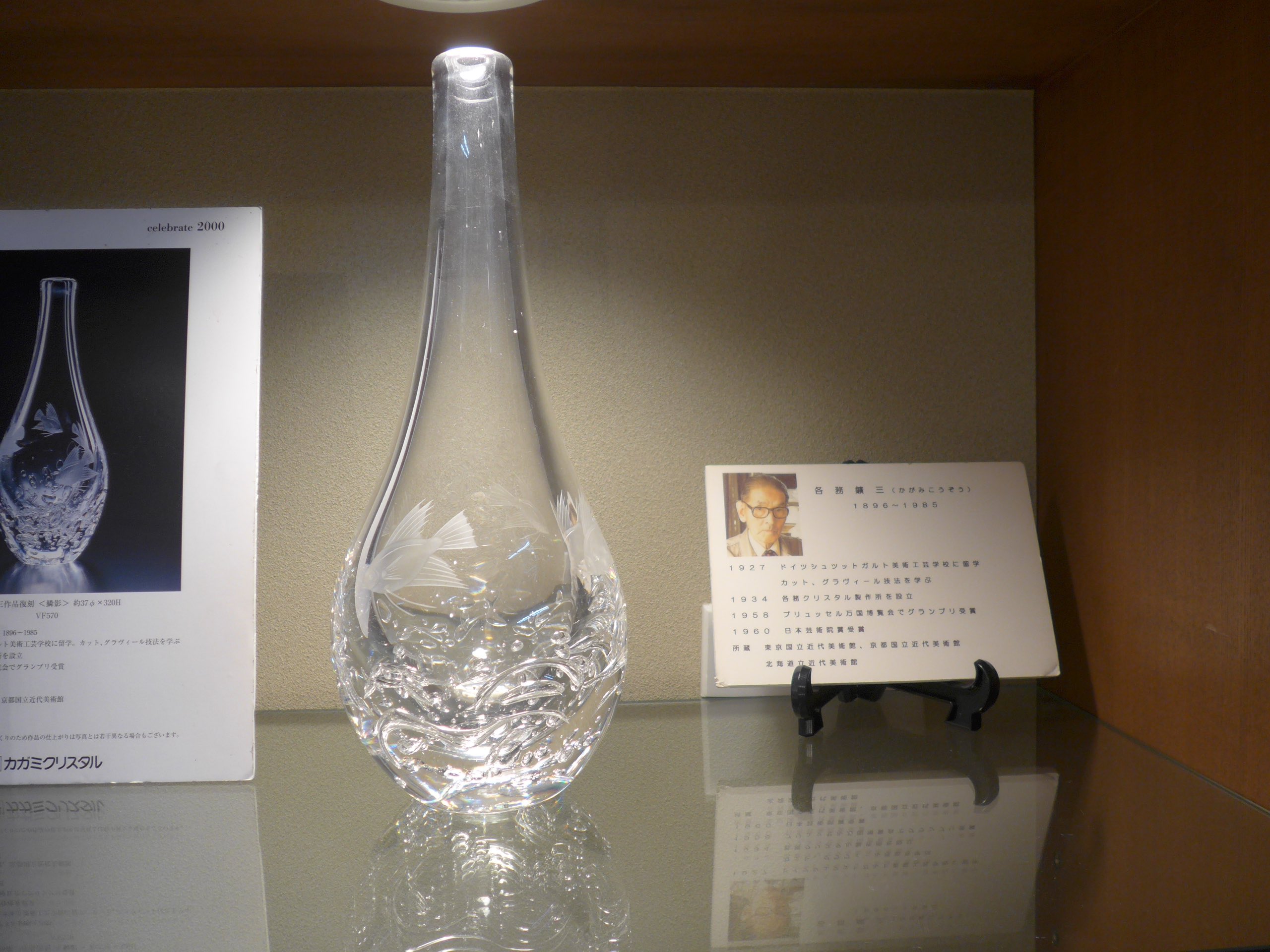
Kagami Kozo's glassware is also housed in the National Museum of Modern Art.
I remember seeing a reproduction replica on a TV appraisal program, but it was still quite expensive. This is the original. He must have used his professional information network and purchasing routes to purchase it as part of his collection. Odawara merchants are truly formidable!
Matsuzakiya Pottery Store "Tosai Gallery"
[Address] 3-1-44 Hamamachi, Odawara City
[TEL] 0465-24-2479
[Opening hours] 10:00-18:30 *Stores open until 19:00
[Closed] Sunday
* Click here for the official website!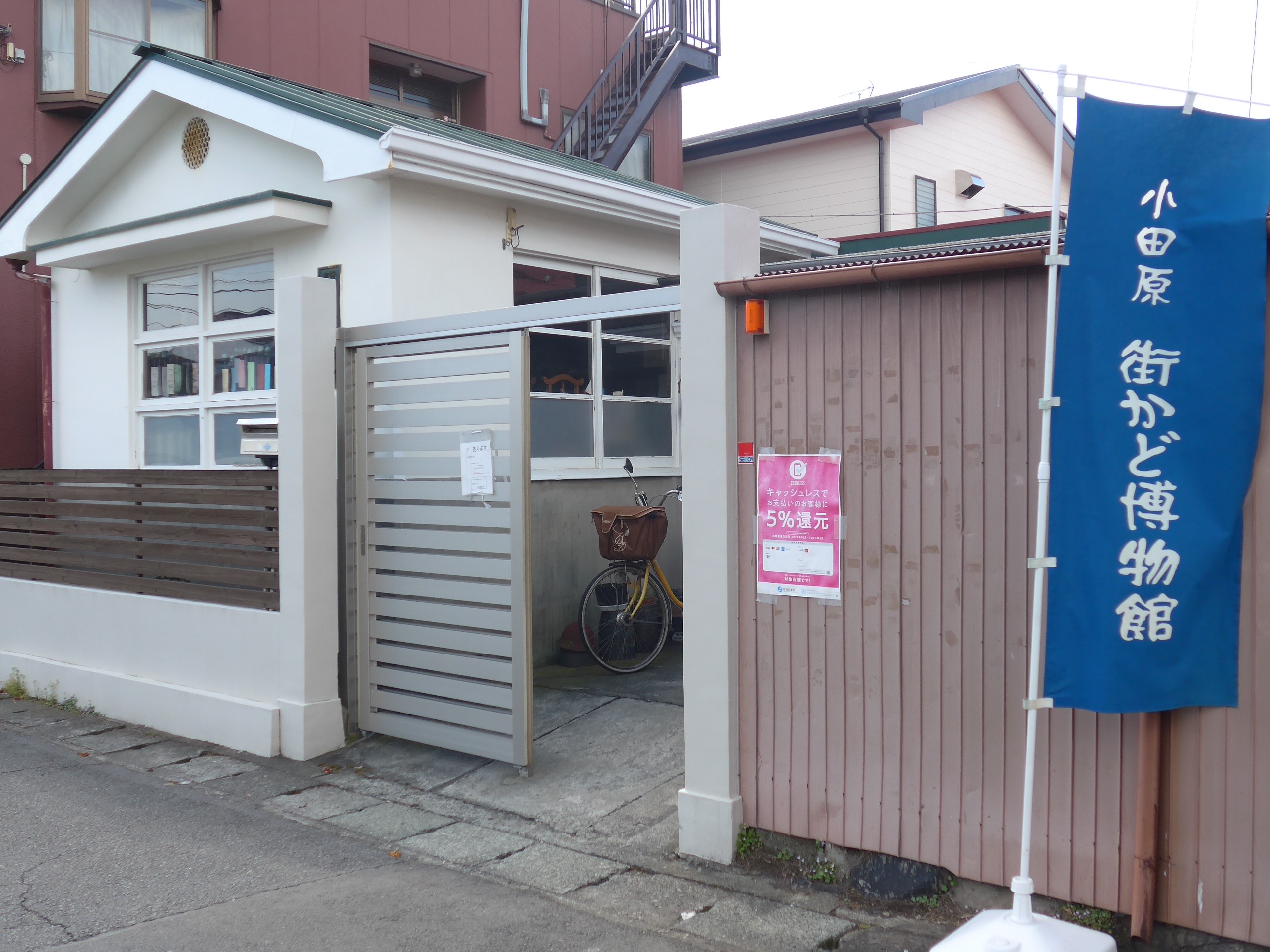
The last stop is the Kashiwagi Art Casting Laboratory's Sahari Gallery, a workshop that carries on the traditions of casting products dating back to the Muromachi period.
During the Edo period, Odawara was the largest casting center in the Kanto region, with around 100 craftsmen living there. As demand for pots and kettles declined, the number of casting craftsmen steadily decreased, but the town is creating new value by specializing in musical instruments.
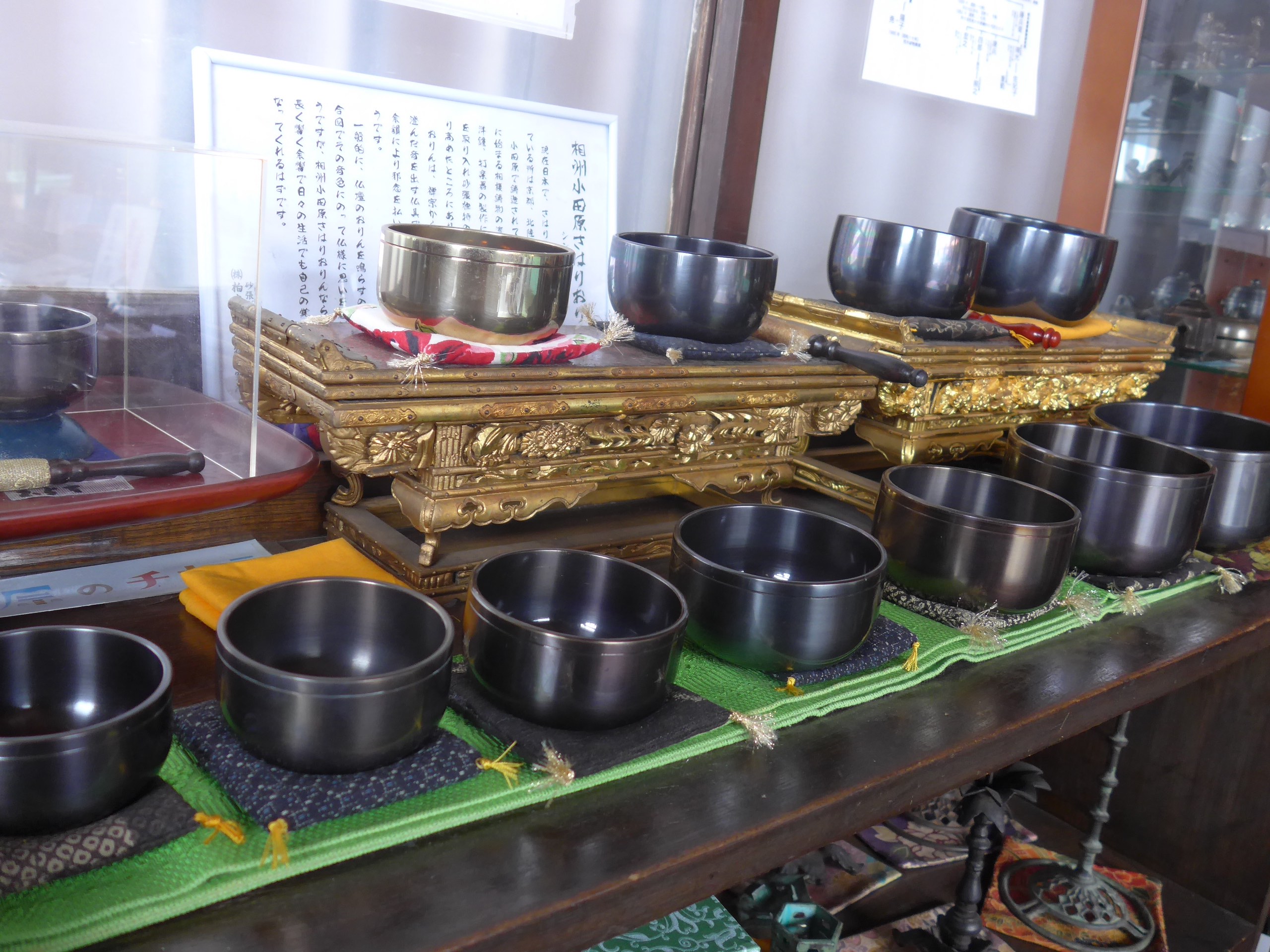
The "sunabari" in the museum's name refers to a type of bronze, an alloy of copper and tin that has been used since ancient times as a material for musical instruments. By tinkering with the composition and shape of this alloy, the Kashiwagi Art Casting Laboratory manufactures and sells musical instruments that have a more beautiful, longer-lasting resonance.
For example, the "orin" (bell), a type of Buddhist altar implement. Until now, I had lived a life that had little to do with Buddhist altars, but if I could be surrounded by such a beautiful sound, I felt that it would be nice to pray to my ancestors every day.
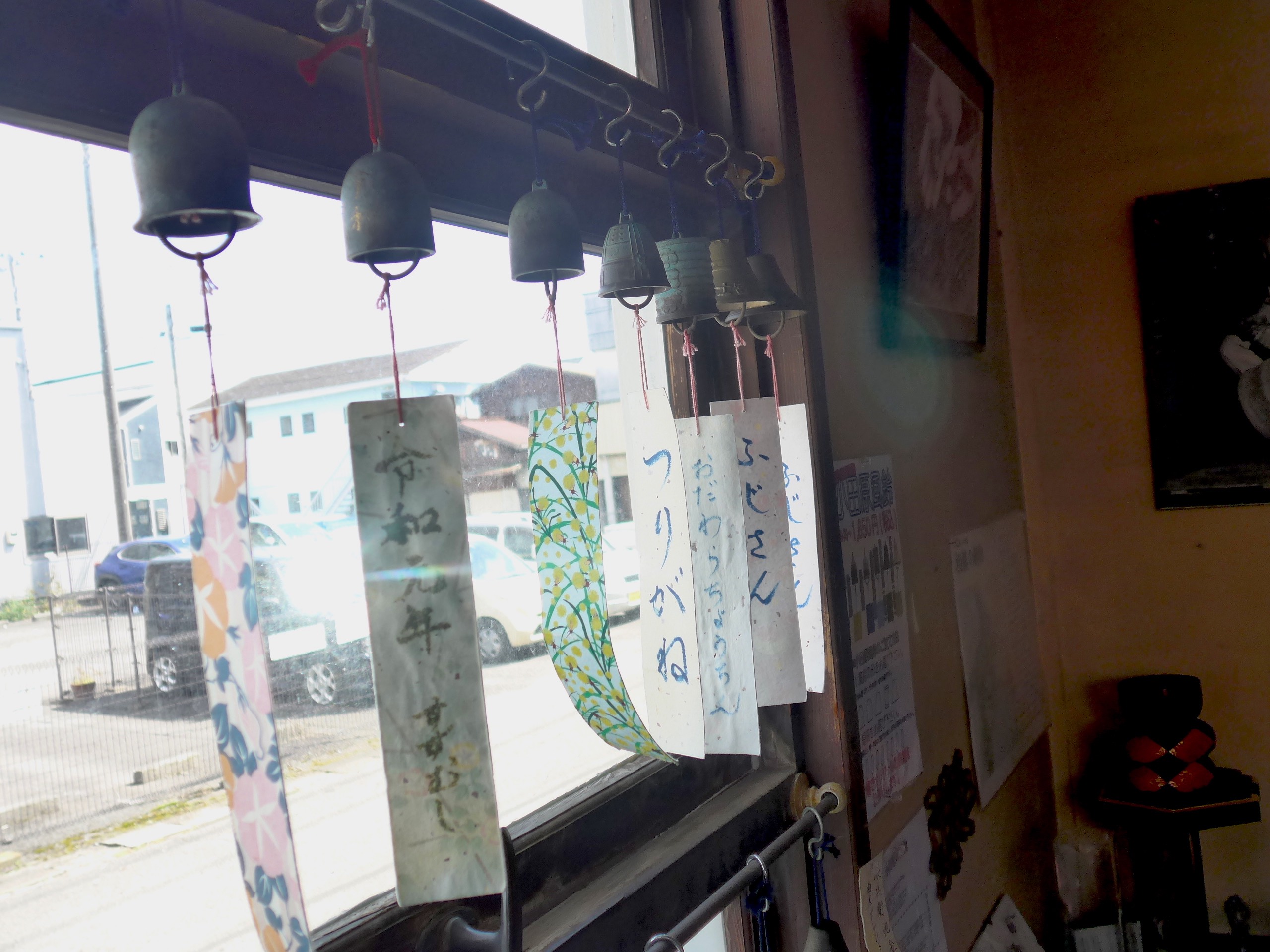 Speaking of musical instruments, we must not forget the wind chimes. Odawara casting suddenly came into the limelight when these wind chimes were used in the film "Red Beard" directed by Akira Kurosawa.
Speaking of musical instruments, we must not forget the wind chimes. Odawara casting suddenly came into the limelight when these wind chimes were used in the film "Red Beard" directed by Akira Kurosawa.At the workshop, you can combine your favorite wind chimes with strips of paper to purchase, making them a great souvenir. Each one has a different tone when you try ringing them, so it's hard to decide whether to choose based on the sound or the design.
Kashiwagi Art Casting Institute "Sand-bari Gallery Music Hall"
[Address] 3-1-22 Nakamachi, Odawara City
[TEL] 0465-22-4328
[Opening hours] 9:00-17:00
[Closed] 2nd, 4th, and 5th Saturdays, Sundays, and public holidays
* Click here for the official website!
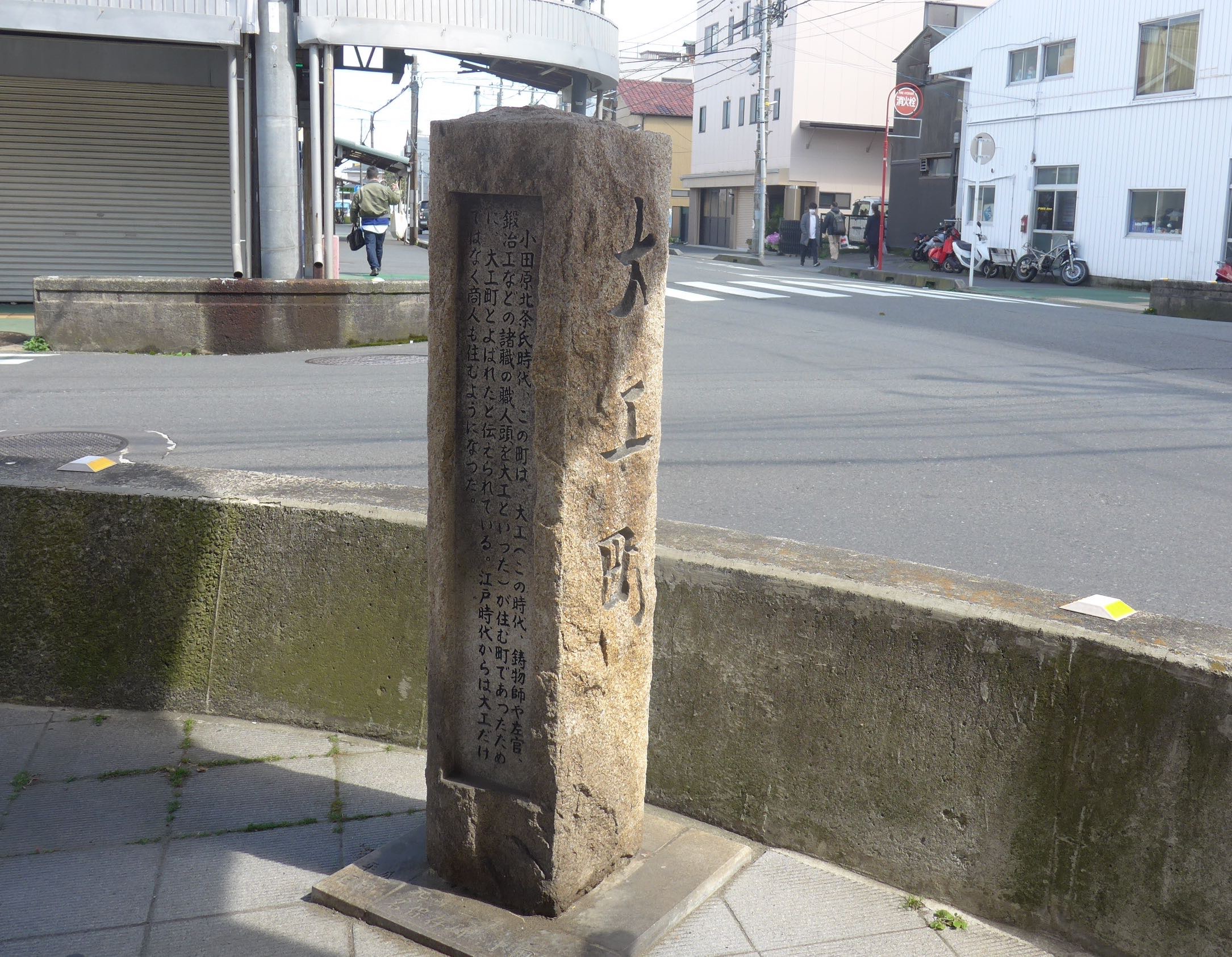
Stone pillars bearing the old town names and their origins stand here and there on the streets of Odawara. Take a leisurely stroll through the town's history, reminiscing about the bustle of the past.
There are many other street corner museums open to the public in Odawara. All are run by volunteers at each facility, so please remember to be mindful of your manners when visiting.



